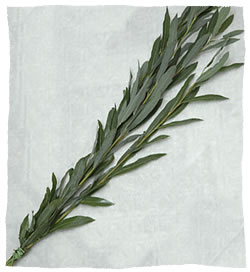The Guantanamo Countdown
President Obama promised to close the facility within a year, but eight months later, the path is looking rockier. Here's what the administration needs to do to meet its deadline.
BY SARAH MENDELSON | OCTOBER 1, 2009
With eight months down and four to go, Washington has suddenly remembered to ask: How is the closing of Guantánamo going? The answer, according to conventional wisdom, is: not great; the one-year deadline was a mistake, and there never was consensus on closure to begin with. Some are on a witch hunt to lay blame. But reports of impending failure are premature, and the preoccupation with not making the deadline is at least somewhat misplaced.
As of early October, in fact, the Barack Obama administration's effort is actually in considerably better shape than it was in May, when it suffered a near-death experience in Congress. Mistakes and missteps have been made, but the rapidly developing conventional wisdom on what these were is simply wrong. Nor are the critics proving helpful in presenting ideas to make the next four months go more smoothly than the last eight.
To be clear, I was a big advocate of the one-year deadline. Last fall, the Center for Strategic and International Studies (CSIS) released "
Closing Guantánamo: From Bumper Sticker to Blueprint," a report I wrote drawing heavily on the deliberations of a nonpartisan working group that met 18 times over eight months, consulting dozens of experts.
Although it's not a consensus document, we nevertheless concluded that closing the detention facility would take a year and should begin immediately after the inauguration to signal a serious shift with previous policies and to capitalize on President Obama's popularity as well as the
wide bipartisan support that did exist for closing Guantánamo. We had thought -- and it seems some, but not all, in the Obama administration agreed -- that the deadline would give the bureaucracy the needed push to move an issue that had been resisted (slow-rolled, in fact) during the George W. Bush administration. We advocated a process we referred to as "review, release, transfer, and try"; in other words, review the files and sort the detainees into two basic categories: 1) release or transfer to a country, and 2) try those slated for prosecution in U.S. criminal courts. As it turned out, gratifyingly, many (though by no means all) of the recommendations from the report were reflected in the president's
executive orders famously signed Jan. 22.
One recommendation that the transition team considered but did not adopt was our call for appointing a "blue-ribbon panel of eminent Americans" to lead the effort right after Obama came into office. These messengers would have been trusted emissaries, a solid mix of Republicans and Democrats, people such as Colin Powell, Sandra Day O'Connor, and Lee Hamilton, as well as other retired generals, former senators, and secretaries of state and defense.
Their purpose would have been twofold: to provide the Obama team with needed political cover and to convey to the American people and Congress the importance of closing Guantánamo, while also beginning negotiations with other countries to house released detainees. We knew that there was goodwill from European officials; after the CSIS report came out, I received e-mails and phone calls conveying their willingness to help the Obama administration with what were viewed as shared problems.
Meanwhile, Americans needed trusted leaders to explain why closing Guantánamo was important from numerous nonpartisan perspectives and even why receiving detainees into the United States, such as the Uighurs (whom the Bush administration had slated for release), was safe and patriotic. Heavyweights from the security community could have explained how al Qaeda, according to U.S. military officers including Gen. Stanley McChrystal and experts at West Point's Combating Terrorism Center, had used Guantánamo for recruitment.
Closing Guantánamo and ending indefinite detention would deprive al Qaeda of that tool. Finally, Americans needed to be reminded that closing Guantánamo held (and still holds) the promise of bringing to justice those who committed heinous crimes -- a crucial point that often seems to get lost in the shuffle.
But instead, the transition team recommended adoption of a different structure: interagency task forces staffed mainly by midlevel bureaucrats who periodically report to the deputy secretary level, where the information would then filter up to the "principals," the cabinet and secretary level, and then, ultimately, to the president.
This structure provided the needed worker bees to do what was quintessentially a government job, such as gathering and parsing through the information on the detainees, which (as we had been told by a former military prosecutor) was not simply in one filing cabinet or even one agency but strewn throughout the government.
Unfortunately, it also meant that there were no appointed emissaries to deliver the key messages about Guantánamo; misinformation was already beginning to spread when Obama wrote the executive orders.
Polls in January showed a slim majority of Americans supported closure, but my suspicion then and now is that, for the bulk of the U.S. public, many basic facts concerning Guantánamo were utterly unfamiliar or at best blurry.
I have yet to see a reputable survey that shows how many Americans can correctly identify the number of people convicted by the military commissions at Guantánamo since its opening as a detention facility in 2002 (three, including one through a plea bargain) versus international terrorists who have been convicted in the U.S. criminal justice system since 2001 (
195). In retrospect, that the case for closing Guantánamo had not been made strongly enough by different sources in January was the first sign of the debacles to come.
Those of us on the outside celebrated the signing of the executive orders on Jan. 22 and then waited, patiently at first and then with increasing nervousness in February and March, over what seemed a lack of movement. As winter turned to spring, this became full-blown alarm. We concluded that either administration officials did not take seriously the timeline of 12 months and/or they were distracted by the numerous other crises (the economy, Iraq, Afghanistan) they had inherited. It was hard to say where the center of gravity was on the bundle of issues related to Guantánamo. No one person seemed to be working this issue full time inside the White House, and nobody was making the case to Congress or the American people.
Weeks went by before the three interagency task forces looking at the Guantánamo detainee files and issues related to detention and interrogation policies were up and running, (again) mainly populated by midlevel government bureaucrats, as one described himself to me, and junior-level political appointees. Worse, many observers noticed that some agencies were sending the very people who had been working these issues for the previous administration. In other words, the slow-rollers were still part of the mix.
The executive orders on Guantánamo had identified, as our report had suggested, diplomacy as central to the closure effort. Nearly two months after the inauguration, in mid-March, the special diplomatic envoy was finally announced: Ambassador Daniel Fried, a career Foreign Service officer. Then, through various unrelated congressional snafus, his appointment was held up until mid-May, nearly four months after the inauguration and smack in the middle of the Obama administration's losing battle on this issue in Congress. For one critical leg of the process, the release and transfer aspect, the calendar had suddenly, incredibly, shrunk from 12 months to eight.
The most serious damage to the president's efforts to close Guantánamo seems to have begun in mid-April. The White House had agreed to have the Justice Department release the Bush administration's Office of Legal Counsel (OLC) memos concerning CIA interrogation techniques, in compliance with a Freedom of Information Act suit brought by the American Civil Liberties Union. These documents from 2002 and 2005 are sprinkled with bizarre, deeply disturbing details, including instructions on what sort of insects (nonpoisonous) could be placed in a coffin-like box with a detainee. Along with the leak in March of the 2006 International Committee of the Red Cross report to journalist Mark Danner, the OLC memos offered yet more detail of what the Bush administration had authorized, and the case against torture seemed to be (again) building.
But the OLC release had one major unintended consequence: It seemed to singularly enrage and embolden former Vice President Dick Cheney, who took to the airwaves like an angry preacher of fear. Home alone and spurred on by the former vice president, many in Congress spun a steady stream of stories gobbled up eagerly even by mainstream news media about how the Guantánamo detainees were infinitely more dangerous than the convicted killers or the international terrorists held in U.S. prisons and that the U.S. justice system simply could not handle them.
The perfect political storm seemed to be brewing. For the first time that anyone could remember, a former vice president was constantly on television railing against the new administration; the improbable revival of military commissions had occurred; and members of Congress were running for cover like children in a rainstorm or spewing falsehoods on the floor of the House and Senate. Meanwhile, there was radio silence from the White House. Apparently, according to a colleague with close contacts in Congress, when pressed by a Senate staffer on the NIMBY issue ("not in my back yard," the crazy assumption that Obama was going to let the Guantánamo prisoners out to roam free in small towns across America), the White House responded: "NIMBY: not our problem."
To make matters worse, the administration was rather breezily asking for an $80 million supplemental for Guantánamo-related costs. This request suggested the Obama administration was considering finding one facility to hold everyone from Guantánamo -- something that our working group had considered and rejected because the pretrial detention facilities associated with the relevant courts could do the job.
On the evening of May 20, I ran into a progressive member of Congress who had just come from the 90-6 vote in the Senate on the administration's $80 million request. I was not surprised he had voted with the majority because simply on the merits, it seemed not to make sense. But when this member of Congress said to me, "Well, our courts cannot handle these cases," I felt panic rising. How could a member of Congress not know of the 195 international terrorists convicted since 2001?
Ultimately the president had to go on the defensive, delivering his first (and only) major address on the issue the next day, May 21, from the National Archives. (Not to be outdone, the former vice president spoke at almost the same time on the same issue from the corridors of the American Enterprise Institute.) Even then, however, the president missed a critical moment to explain to the American public that the U.S. justice system, as imperfect as it is, had already successfully handled nearly 200 international terrorist convictions. His speech quieted the public denouncements, but for those who follow the issue, the speech was confusing and distressing, even surreal, mixing legal systems and outcomes. For example, instead of two categories (release/transfer and try), he identified five, including military commissions and what he referred to as "prolonged detention," or detention without charge.
Two basic unknowable assumptions had driven a lot of my group's work on Guantánamo: 1) the United States' overseas allies would help, and 2) we couldn't count on public and congressional support. The last was clearly an understatement. We also assumed that these two factors were negatively linked: If officials refused to release any detainees into the United States, we thought others would be unlikely to help and the mission to close Guantánamo would be doomed.
Luckily, we were wrong. Yes, by early June, the battle over whether any Guantánamo detainees (read: the Uighurs) would be released into the United States had been lost. Astoundingly, however, Dan Fried's new job, begun only on May 15, had not turned into mission impossible. By late June, Fried, together with able and interested European counterparts, forged in record time a
general agreement allowing for all European Union countries to independently decide whether they would help. In fact, in the four months since Fried has been on the job, through a combination of his skill and the desire of others well beyond Europe to help the Obama administration, many countries have overlooked U.S. missteps and mistakes.
That has meant that the 75 or so detainees who are slotted for release and transfer are likely to find homes. Among the many countries that have either stated they intend to receive people or have already taken detainees include: Portugal, France, Britain, Spain, Germany, Ireland,
Palau, Bermuda, Romania, Bulgaria, Hungary, Lithuania, Estonia, Latvia, Georgia, and Croatia.
The summer went, in fact, relatively smoothly. Reports and contacts suggested that the Guantánamo review process was proceeding apace. The interrogation task force issued a press release concerning the need to build a cohort of professional interrogators who could be deployed at a moment's notice and trained in noncoercive methods, something we had also suggested in our report. Also by September, the struggle to seek legislation for a national security court had been defeated by those who, like us, considered that plan another major step toward institutionalizing detention without charge inside the United States.
Ultimately, this effort has always been, to a certain extent, a numbers game. How one gets to zero is ultimately how closing Guantánamo will be judged. The review of the 223 detainees still being held at Guantánamo has not been completed but is said to break down into approximately 75 for release or transfer, 40 for prosecution, and approximately 110 who, depending on whom you talk to, include detainees yet to be sorted into either category; a group of mostly Yemenis that the government, led by National Security Council counterterrorism advisor John Brennan, hopes to transfer to Saudi Arabia; and/or, most ominously, a group of indeterminate size that the government cannot release, transfer, or try.
The important question then becomes not whether the administration makes its deadline, but after all is said and done, will it emerge with a third group that it says can neither be released nor prosecuted, as the
Washington Post reported last week? If so, under what authority will it seek to detain these individuals? Will they argue that they have the authority, the same authority that the Bush administration claimed that so many of us railed against, to hold these people indefinitely under the 2001 bill that authorized the use of military force in Afghanistan?
If Obama is going to shift U.S. counterterrorism policies concerning detention away from the damaging Bush approach, he and his team need to put to rest the radical notion that there are people who cannot be prosecuted but who are too dangerous to release. It needs to be clear that this concept is distinctly un-American, that American legal practice is based on entirely different principles, and that the United States has fought existential wars to uphold these principles.
The so-called third category is precisely what the annual State Department global reports on human rights have so roundly and accurately
criticized in countries such as Russia, Iran, and China. The U.S. departures from these principles over the last eight years have in fact
enabled authoritarian regimes around the world and left human rights defenders isolated. When foreign audiences applaud Obama's statements about closing Guantánamo, it is this very reversal -- this paradigm shift -- they are endorsing.
As we look to the next four months, learning the right lessons from the last eight becomes especially critical. Most importantly, the timeline was not the problem. A year of steady work is what it likely will take. The administration got off to a fast start with the president's signature, but this effort had barely gotten off the ground by March, let alone May. The administration should continue now to do everything it can to make the January deadline. If it continues to make progress and push, seeking a 60- or even 90-day extension should not be seen as a failure, but as working the year-long calendar set by the president.
The administration also needs to solve what we in the CSIS working group found to be the hardest issue of all: Who is it in the U.S. interest to detain, and what authority does the United States have to detain them? The detention task force will provide some response to these questions, but many who have met with this group -- including esteemed lawyers and retired intelligence officers -- expect inside-the-box bureaucratic answers instead of bold or creative solutions.
Therefore, the administration needs to do this fall what it failed to do last spring: It needs to gather wise counsel and mobilize it to make the case to the American people, especially as it presents its "plan" for closure, as demanded by Congress. It is hard to see how the sort of eminent Americans we had in mind when we recommended the blue-ribbon panel will take the time to work on this very difficult issue absent a direct request from the president, though Human Rights First
convened a distinguished group of retired generals and admirals this week on Capitol Hill and with various senior administration officials.
The president also needs sage outside advice that combines foreign policy, security, intelligence, legal, and human rights experience to complement the recommendations he receives up the bureaucratic chain. Ideally, these individuals need to be of such stature that they will speak freely and even contradict one another in the presence of the president.
More important and difficult, the administration ought to divert resources to amassing evidence on the most difficult detainee cases as soon as possible. By all accounts, it seems that there might be a few dozen -- maybe 50 at the most, maybe as few as 30 -- for whom both prosecution and release seem equally unappetizing.
The administration ought to deploy teams of experienced prosecutors and FBI agents into the field to work the evidence. If, after this overseas exploration, the teams determine that there is no evidence of a crime and that the government cannot prosecute, then the teams need to recommend that these people be released. Ultimately, it will be Obama's decision to do so, and here he needs to show the quality of leadership that got him elected. The problem will then move to Dan Fried's able office to solve, together with other countries.
Based on the last few months, there seem to be as many people outside the United States invested in closing Guantánamo as there are inside. That alone gives me hope that this can all get done the right way and in 2010.







 Another mitzvah that is unique to Sukkot is the taking of the Four Kinds: an etrog (citron), a lulav (palm frond), three hadassim (myrtle branches) and two aravot (willow branches). The Midrash tells us that the Four Kinds represent the various types and personalities that comprise the community of Israel, whose intrinsic unity we emphasize on Sukkot.
Another mitzvah that is unique to Sukkot is the taking of the Four Kinds: an etrog (citron), a lulav (palm frond), three hadassim (myrtle branches) and two aravot (willow branches). The Midrash tells us that the Four Kinds represent the various types and personalities that comprise the community of Israel, whose intrinsic unity we emphasize on Sukkot.



 Willow and Hoshaanot
Willow and Hoshaanot